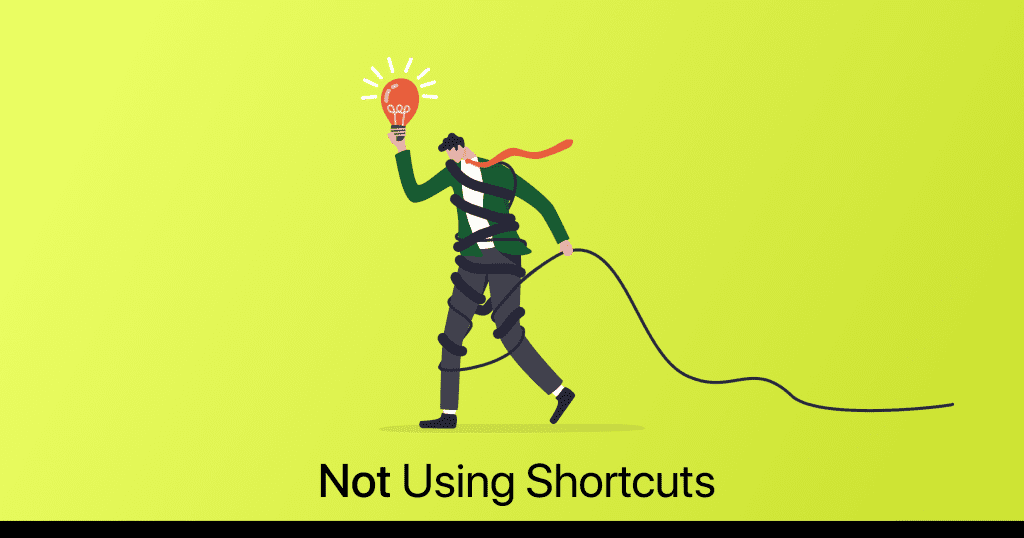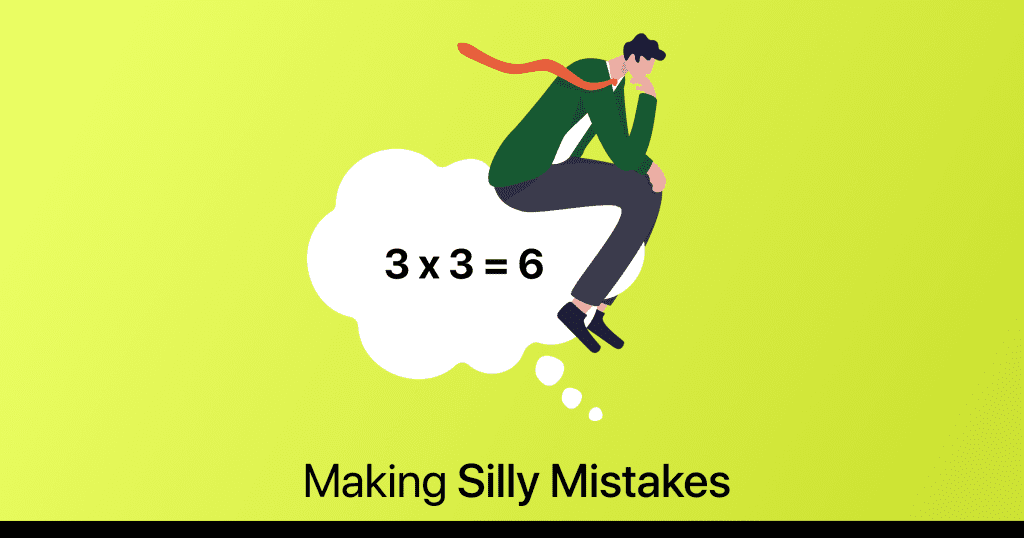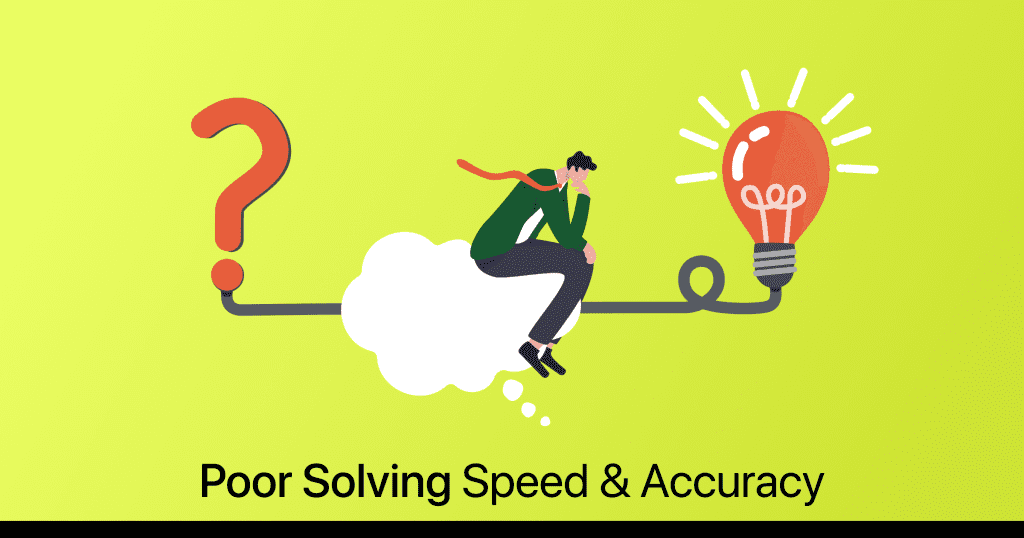Mistakes to Avoid While Solving Quantitative Aptitude

Quantitative Aptitude is one of the significant challenges in a student’s path of acing the placement examinations. Students also prepare Quantitative Aptitude section thoroughly because it can make or break their overall efforts in the placements.
But the importance also creates conditions where many students make mistakes that can be avoided with proper guidance. Many students face difficulty in time management, while others take too much stress that ultimately eats up their confidence.
So here we are with an article to help you identify and understand the mistakes to avoid while solving Quantitative Aptitude.
Mistakes to Avoid While Solving Quantitative Aptitude Section
These are the mistakes to avoid while solving Quantitative Aptitude:
1. Not Understanding the Question

Many students make the mistake of not understanding the question completely before answering the question. The goal of answering as many questions as possible before time runs out is not entirely correct. This goal can cost students significantly in the long run.
How to Avoid This Mistake?
Students should understand that Quantitative Aptitude examines the candidate’s rational abilities. And rational thinking demands a complete understanding of the problem until it answers the query “What the question is asking” in your mind. Understanding the question thoroughly can also help you solve it more quickly since you now know what the question demands.
2. Not Using Shortcuts

In the Quantitative Aptitude, students occasionally make the mistake of choosing a lengthy approach to solving a problem. They do this to avoid any mistakes that might occur if they implement the shortcut method incorrectly. However, by doing so, they are wasting time and energy in an already time-constrained environment.
How to Avoid This Mistake?
Students should understand that the shortcuts have been devised with a lot of effort and have been refined through the years. If you are having difficulty understanding how a shortcut works, you can take help from Quantitative Aptitude books and YouTube channels managed by academic experts.
Students should also practice memorising the shortcut method’s approach, which will help them save time and energy in the actual Quantitative Aptitude examination.
3. Poor Time Management

Many students complain that they were not able to complete all the questions on their Quantitative Aptitude exam. And several students also admitted that they sacrificed accuracy to cover up all the questions while most of them didn’t get the time for revision. Students should understand that Quantitative Aptitude tests a candidate’s ability to work under pressure, and not completing the exam in time is not a good impression.
How to Avoid This Mistake?
Students should not worry about this problem too much as this can be improved with a little bit of practice and directed efforts. Students can take daily and weekly mock tests to get habitual of the paper’s pattern, and it will also help them to manage their time properly.
4. Making Silly Mistakes

Many students properly manage their time using shortcut methods but make silly mistakes that eradicate their entire effort. The most common of these mistakes is not paying attention to minus signs, which can be pretty disastrous to your whole calculation. Another most common mistake is making calculations pretty hard and not realising that you are slipping away from the main problem.
How to Avoid This Mistake?
Students can avoid these mistakes by using common sense and attention to detail. For example, while solving problems, students must turn back to see if they had made a mistake if the calculations grow lengthy and complex and provide answers with the desired level of precision, for example, to two decimal places.
5. Poor Solving Speed & Accuracy

Many students make mistakes of not practicing their solving speed enough, and ultimately it hampers their overall time management. Not paying attention to overall accuracy is another common mistake by the candidates in the Quantitative Aptitude.
How to Avoid This Mistake?
Students can practice on mock tests so they can get habitual with the paper pattern. They can also learn different shortcut methods and techniques to improve their calculation speed.
For increasing accuracy in Quantitative Aptitude, students can create test-like conditions in their homes and try to solve as many problems as they can in the given duration. After taking the test, make sure to thoroughly analyse the answers and draw an accuracy percentage from them (the number of correct answers).
If the accuracy percentage is more than 80% on average, they are going in the right direction. If the percentage falls below that number, they need to practice more.
6. Too Much Stress

One of the most common mistakes while solving Quantitative Aptitude is that the students take too much stress. This stress ruins their calculation speed and also destroys their confidence, which ultimately negatively affects their accuracy.
How to Avoid This Mistake?
Students must understand that while Quantitative Aptitude examinations are important, they are not the most significant event in their lives. They should treat Quantitative Aptitude examinations as an exam only and focus on giving their best, which is all that any human being can do.
They can also conduct breathing exercises to reduce stress and revisit their correct answers to build their confidence.
Final Words
We hope this article helps you to identify and understand the mistakes to avoid while solving Quantitative Aptitude. Quantitative Aptitude can be a pretty daunting task for students, but with directed efforts and smart guidance, it can be easily mastered. If you have any queries or suggestions, feel free to drop a comment below.
Explore Quantitative Aptitude Guides
- Quantitative Aptitude Easiest Topics
- Quantitative Aptitude Learning Order
- Quantitative Aptitude Scoring Guide
- Quantitative Aptitude Solving Guide
- Quantitative Aptitude Topics for IT Companies
- Quantitative Aptitude Topics for Placement Exams
Explore More Quantitative Aptitude Resources
- Quantitative Aptitude Questions
- Quantitative Aptitude Apps
- Quantitative Aptitude Teachers
- Quantitative Aptitude Telegram Channels
- Quantitative Aptitude Websites
FAQs
The most common mistake is not paying attention to minus signs especially during simplification, which can be pretty disastrous to your whole calculation.
Working on solving speed helps in improving the time management skills of the candidate by improving their calculation speed and knowing which shortcuts to use.
While working to improve the Accuracy helps the candidates to boost their overall correct answer on average.
Students can overcome anxiety by conducting breathing exercises to reduce stress and revisit their correct answers to build their confidence.
Related Posts


Quantitative Aptitude Cheat Sheet
Quantitative Aptitude is a crucial aspect of many exams, interviews, and job placements. It requires the ability to perform mathematical …
Warning: Undefined variable $post_id in /var/www/wordpress/wp-content/themes/placementpreparation/template-parts/popup-zenlite.php on line 1050







